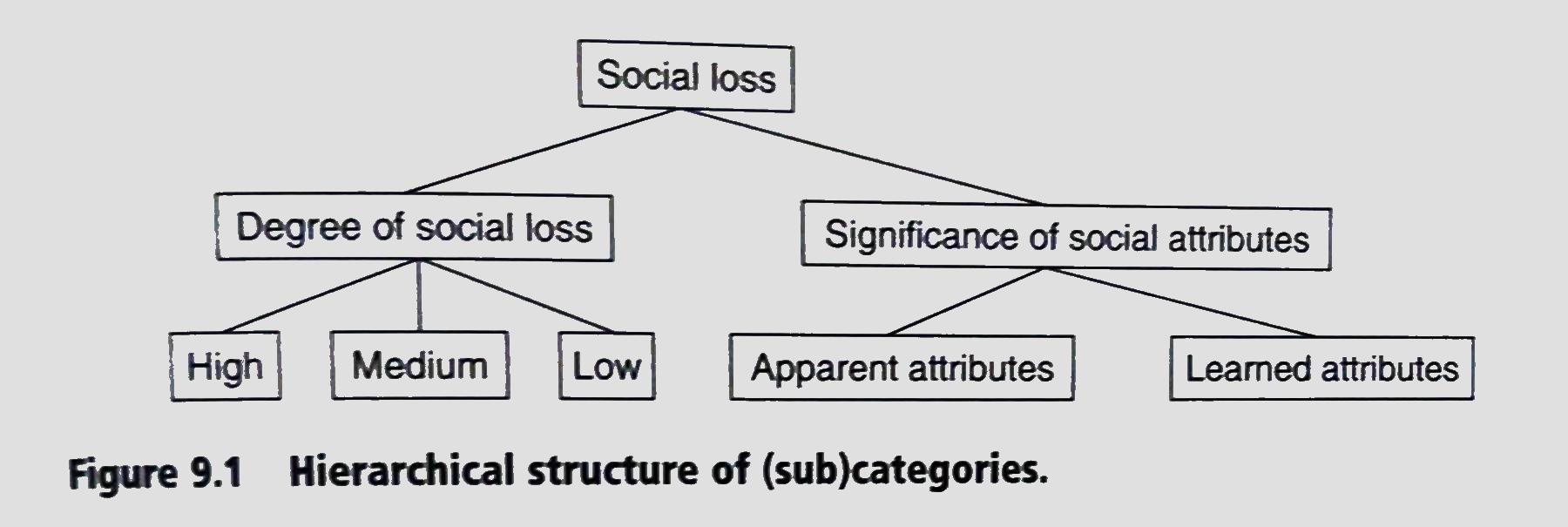
The Development of Categories: Different Approaches in Grounded Theory
By Udo Kelle
Kelle, U. (2009). The Development of Categories: Different Approaches in Grounded Theory. The SAGE Handbook of Grounded Theory, 191-213. doi:10.4135/9781848607941.n9
Category Building Through Constant Comparison: The Basic Rules From the Discovery of Grounded Theory
- Categories emerge from data, not forced onto data (193)
- Developing pre-determined coding scheme is part of the (past) “hypothetico-deductive strategy” before the emergence of GT
- Constant comparison is used throughout coding process to substitute the absence of a pre-determined coding schema
- The process “generates theoretical properties of the category”
- Category vs. Property
- Category = topics
- Property = The emerging relationships observed between categories; “theoretical property”
- You can say that there are theoretical properties to categories – these capture the relationships between categories

- Incidents can belong to multiple categories / sub-categories
- Not all categories allow incidents to belong in multiple sub-categories
- This process is done through constant comparison. The goal is to look “for commonalities and differences between incidents” and answer, “according to which criteria do the incidents vary?”
- And this forms theoretical properties of categories (which leads to GT)
- Theoretical sensitivity is a balance between using existing theories without having a strong commitment to them and lining it up with what is found in the field (the data)
- How will I know which existing theory to use? Is this where I may lack as a novice researcher?
The Glaserian vs. The Straussian Approach: Two Ways of Theoretically Informed Category Building
- Barney Glaser – developed theoretical coding
- Anselm Strauss – developed “coding paradigm”
- These are two different methods to pursuing theoretical sensitivity (finding the theoretical properties / relationships between categories)
Barney Glaser’s model of theoretical coding:
- Theoretical coding vs. substantial coding
- Substantive coding is an open coding method done first to mark empirical substance
- Theoretical codes are terms to describe possible relations between substantial codes to help form theoretical models
- Glaser’s theoretical codes were formal and highly conceptual to describe the order of the social world – I don’t think mine has to be like that?
- Glaser uses coding families (the 6 C’s)
Disadvantages of Theoretical Coding:
- Lacks differentiation between formal categories and substantive categories
- Still does not address the lack of clarity in the methods to pursue theoretical sensitivity
- Theoretical coding doesn’t address how to develop theories by combining existing theoretical knowledge with emerging categories from the data; The 6C’s of the coding family doesn’t lead to clarifying causal relations
- Therefore, it still doesn’t explain the methods to achieving theoretical sensitivity
- Researchers are required to have established breadth of knowledge of different theories (schools of thought)
Anselm Strauss and Corbin’s concept of “coding paradigm”
- Coding paradigm works to find relations between categories (similar to Glaser’s theoretical coding)
- Axial coding is an advanced stage of open coding. It is coding done around one category at a time
- Coding paradigm requires a previously defined theoretical framework
- It is quite instructive because it involves identifying: causal relations, phenomena, context, learning conditions, action and interactional strategies, consequences
- There is a risk to forcing categories on data rather than letting them emerge
- Coding paradigm helps novice researchers because they’re guided on how to code data based on explicit categories from a framework
- Coding paradigm still touches upon Glaser’s coding family (6 C’s)
- Glaser’s methods are more suitable for sociological pragmatism
Glaserian vs. Straussian category building
- Glaser – “coding is a process of combining the analyst’s scholarly knowledge and his research knowledge of the substantive field”
- Strauss – “Suggests the utilization of a specified theoretical framework based on a certain understanding of human action”
- Which method is suitable for mine?
The Use of Previous Theoretical Knowledge in Category Building
- Theoretical knowledge forces data while theoretical concepts helps with the emergence of suitable theoretical categories
- My research question is an example of a topic that’s empirically contentless and vague. But there could be empirically rich categories
- Empirically rich = it can be studied deeply to prove / disprove it
- Good GT starts with heuristic concepts that have the potential for empirically rich studies
- Heuristic categories can also be too overwhelming for novice researchers because it can lead you outside the intended domain
Concluding Remarks
The Straussian method seems more suitable for me because the Glaserian model requires the researcher to have a broad background in sociological theories – which I don’t have.
The strategy of ‘theoretical coding’ proposed by Glaser is especially interesting for experienced researchers with a broad background in sociological theory: if the researcher has large stock of theoretical categories at hand and a deep reaching knowledge about their interrelations, they can easily start coding without any predefined category scheme in mind and may develop the relations between substantive codes by drawing on theoretical codes which in their opinion are suited best for the data. For that purpose, researchers can either resort to the coding families suggested by Glaser and combine them in meaningful ways or they may define their own coding families by using theoretical approaches not mentioned by Glaser.
Page 211
Novice researchers may experience greater difficulties in selecting and combining the most appropriate coding families for their research domain. Therefore, they may benefit from using a predefined coding paradigm and thus avoid drowning in the data. This may include but is not restricted to, the specific coding paradigm rooted in pragmatist theory of action recommended by Strauss and Corbin. As with Glaser’s coding families, researchers may also construct their own coding paradigms. In doing so, one must be careful to draw on concepts which do not force the data but enhance theoretical sensitivity and can serve as heuristic devices.
Page 211